Escape Eco-Boosts chance of staying No. 1
New Ford Escape Has Style and Features to Hold No. 1
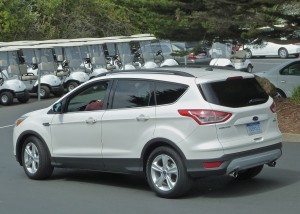
Boxy lines are gone, as 2013 Escape gains new style, power and enough features to stay atop SUV sales.
By John Gilbert
SAN FRANCISCO, CA. — The current Ford Escape is a sales winner, but its familiar boxy shape is being replaced by a better-looking, better-handling and more powerful and versatile model, with perfect timing to take the top-sell of the entire SUV industry to new levels of sophistication and technology for the 2013 model year.
Technology and a tough economy are dominating the industry, and the Escape was positioned perfectly to capitalize on the rush toward smaller utility vehicles coupled with demands for higher fuel economy with downsized but still feature-packed compact utility vehicles. The 2012 Escape is the last of the original boxy design, and Ford did its best to fill it with its latest gadgetry during the new model’s incubation. The reward was that 2011 “was our best sales year ever, with 254,000 sold,” said Frank Davis, Ford’s executive director of engineering, and strong sales continue in 2012, especially with model-end bargains sure to come.
“But,” Davis added, “you’ll find that from the standpoint of styling and dynamics, the new Escape is truly a 21st century SUV.”
Last year’s sales success was a bit of a surprise, because the Honda CR-V had been the sales leader of the compact SUV category from 2007 through 2010, while Ford had been content to be a strong second, while focusing — so to speak — on its new Explorer, which showed a 124 percent sales increase in 2011, and the midsize Edge and Flex. The trusty Escape shot up in sales prominence with a major assist from a natural disaster. The earthquake and tsunami that struck Japan in March of 2011 seriously inhibited Honda production, most notably of parts for the CR-V. Many potential CR-V buyers seeking a new vehicle looked for an alternative, and the Escape was ready and willing to meet their demands.
For the coming year, new generations of both the Ford Escape and the Honda CR-V have been introduced, which should make their current year’s battle for the top spot compelling indeed. Both vehicles are totally redesigned on the outside, and in fact share similarly sleek lines, and both also have new interiors accommodations. Ford gives the Escape extra push with new and more sophisticated powertrains. It may sound startling to hear that Ford has outflanked Honda in powertrain offerings, but while Honda has chosen to stay with its dependable but aging 2.4-liter 4-cylinder, as well as its smooth but dated 5-speed automatic in the new CR-V, Ford is installing two new EcoBoost turbocharged 4-cylinder engines to join the returning 2.5-liter base 4 with a new 6-speed automatic transmission in the new Escape,.
It will be up to consumers to decide how important high-tech power is, as well as in styling and features, where the Escape and CR-V are extremely competitive with each other, just as they are with exterior and interior dimensions and stowage potential. For example, the CR-V has improved rear cargo space to 37.2 cubic feet while the new Escape has 34.3 cubic feet behind the rear seats, but when you fold the rear seats down, the CR-V’s 61.4 cubic feet is bypassed by Escape’s 68.1 volume.
The bigger point of competition will undoubtedly be under the hood. Honda’s strong 2.4 engine — which can be found in early 1990s specialty cars like the Prelude, and as the base engine in the current Accord and Acura TSX — delivers 185 horsepower at 7,000 RPMs and 163 foot-pounds of torque at 4,300 revs, with a towing capacity of 1,500 pounds.
Most consumers might buy a larger, beefier SUV if they tow heavier trailers, or tow a lot, but the new Escape attempts to cover all those bases. In the new Escape the base engine is the 2.5-liter 4, with 168 horsepower at 6,000 RPMs and 170 foot-pounds of torque at 4,500 RPMs, and a 1,500-pound tow capacity. Next in availability is a 1.6-liter EcoBoost, where turbocharging boosts horsepower to 178 at 5,700 revs and torque to 184 at only 2,500 RPMs, with a 2,000-pound towing capacity. The top engine is the 2.0-liter EcoBoost, with 240 horsepower at 5,500 RPMs and a whopping 270 foot-pounds of torque at 3,000 at RPMs, which has a towing capacity of 3,500 pounds. Read more
Dart clears hurdles as compelling compact
By John Gilbert
AUSTIN, TEXAS — Chrysler’s new-car stable was so desperate for a compact car that the bar was pretty low for the 2013 Dodge Dart to hurdle. For example, imagine that to be successful you only had to pick two of the following assets: A. good looks, outside and inside; B. tight build quality; C. excellent fuel economy; D. reasonable base price; E. performance that is pleasingly peppy; F. precise and agile ride and handling; G. genuine high-technology features; and H. contemporary connectivity standards.While picking only two, be aware that there are a number of successful cars out there without more than a couple of those assets. When the 2013 Dodge Dart makes its way into showrooms by June of 2012, however, the Dart listing will need one more choice, for “all of the above.” The Dart seems to have it all, after a brief preliminary test of preproduction models, starting with the first-glance attractiveness that makes it such a bonus to have Italian flair mingling with Chrysler engineering.
All of that, and the rest of the endless array of features, would fall flat, however, without the allure of initial pricing, in order to compete with the likes of Honda Civic, Ford Focus, Mazda 3, Chevrolet Cruze, Toyota Corolla, Nissan Sentra, and Hyundai Elantra. The Dart gobbles up that objective, too.
Five different Dart models expand from there with assorted technical and package options. They include:
- SE, with all the good looks standard 2.0-liter engine, four-wheel disc brakes, brake assist, brake-lock differential, stability control with electronic roll mitigation, traction control, plus 10 airbags, at $16,790.
- SXT, which adds extra content such as power mirrors, taillight surround, heavy-duty battery, console, 17-inch wheels, and makes a turbo engine available, for $18,790.
- Rallye, adding foglights, trip computer, steering wheel remote controls, and leather-wrapped steering wheel, at $19,790.
- Limited adds a U-Connect 8.4-inch touchscreen with voice-command multimedia, numerous power options including a nine-speaker audio upgrade, sunroof, active grille shutters and underbody panels to enhance the drag coefficient to a scant 0.285, at $20,790.
- R/T, with all the Limited goodies plus a 184-horsepower 2.4-liter engine, special leather seats, sport suspension and various performance trim features, for $23,290.
The performance-oriented R/T won’t be available until a few months after the rest of the Dart fleet reaches showrooms. But one of the dizzying features about the Dart is that it will be available for custom-ordering and rapid-delivery, two things which might seem mutually exclusive. It’s all in the plan for allowing customers to select a Dart with exactly the equipment an individual might want. Everything above the basic SE gets the “racetrack” taillights, which are featured on the Charger and encircle the whole rear facade with a row of 152 LED lights.
Among the major challenges facing Chrysler Corporation two years ago was that consumers reacted to the plunging economy by scrambling to buy smaller and more fuel-efficient cars, and there were no — as in zero — compact or subcompact vehicles anywhere to be found in the entire Dodge-Chrysler inventory. The Neon had been OK, but disappeared in favor of the Caliber, which was precisely between small SUV and tall station wagon in a netherworld that left it out of either category.
Fiat’s buyout came along just about then, saving the company from potential extinction. Immediate renovation of the interiors and feature trim on all existing Dodge and Chrysler vehicles was impressive, but there was still the major vacancy — no compact car in an ever-more-compact world. Fiat wanted to come back into the U.S. market with its own Fiat 500 subcompact, as a separate entity, and that has happened. Meanwhile, Dodge and Chrysler had decided to discontinue the Caliber two years ago, and when Fiat installed Sergio Marchione as new Chrysler CEO, the idea of a new compact car was hot on the griddle. In November of 2010, the decision was made — Go! Read more
New CR-V seeks old CR-V’s top spot
By John Gilbert
Honda got quite comfortable when its CR-V became the largest-selling sport-utility vehicle in the industry in 2007 and held that position until 2011. Only production losses caused by the tragic earthquake and tsunami that hit Japan dropped the CR-V behind the Ford Escape as the top-selling SUV, but just over a year later, Honda is back up to speed and projecting the new fourth generation CR-V will return the compact SUV to its position of prominence.
The new CR-V takes a new styling direction, replacing the third-generation’s symmetric-arc silhouette with a more sophisticated sleekness, and displaying Honda’s amazing packaging skills that offer more interior room and a more spacious feel even while the new vehicle is almost an inch shorter than its predecessor.
If anything, the new CR-V mostly resembles the new-generation Ford Escape, which is also just being introduced and should put both vehicles into an interesting position to continue their duel at the top. It used to be that their competition would be for only the compact crossover (CUV) segment, but with economic and fuel-efficiency issues becoming top priority, and dropping large and even midsize SUVs in popularity, the CUVs are rising fast enough to become the hottest sellers in the industry.
Honda doesn’t hesitate to claim its young-family oriented compact crossover is aimed to appeal to women, who make over half of the decisions on vehicle purchases. Evidence includes a dashboard that is extended on both sides for a more spacious look; making the center console large enough to conceal a purse; offering ambient lighting around the instruments that changes from white to a subtle green as you drive more economically.
Connectivity is another improvement for the new CR-V, which accommodates whatever electronic gadgetry you might have — except for iPhones, curiously, while Blackberrys are no problem. You can use voice commands to text while driving, because when you receive a text message, the i-MID (intelligent multi-information display) will read it aloud to you, and your brief response will be relayed back. The i-MID screen can even be set to display favorite photos for further personalization.
Functionally, the CR-V rides atop an all-new all-wheel drive system, doing away with the separate rear hub that used to send power to the rear whenever the front wheels spun. The new system uses an electronic control to more quickly transfer torque from front to rear axles, and provide a portion of power to the rear for climbing hills and for start-up traction, because a natural rearward weight transfer in both circumstances require more power from the rear. When cruising, the rear power disengages, but up to 100-percent of torque could go to the rear when the front slips. Read more
Acura RDX undergoes smooth refinement
By John Gilbert
When Honda decided to grace its upscale Acura line with a compact crossover SUV for the 2007 model year, it rolled out the RDX, which was an impressive sports-car-like performer amid a sea of more mundane competitors. That sea has experienced a remarkable rising tide during the past five years, so it’s time for a new RDX that is both an impressive performer and a bit of a contradiction on wheels.
The new design is considerably smoother, playing off the just-introduced Honda CR-V with a distinctly upgraded spin to set it apart from its mainstream sibling. It discards the high-performance turbocharged 4-cylinder engine for the smooth and powerful 3.5-liter V6 that powers the Acura TSX sedan and the Honda Accord and Odyssey van. Handling and connectivity features are among focus points of the new RDX, which has lost the harshness of the first generation’s ride without sacrificing the firm cornering feel.
The new RDX will have base prices of $34,320 for front-wheel-drive models, and $35,720 for a new and more-sophisticated all-wheel-drive system. Built at the East Liberty, Ohio, plant, the RDX will compete with the BMW X3, Audi Q5, Mercedes GLK 350, and Infiniti EX35, according to Acura, but the proliferation of compact crossovers might also throw the Volvo XC-60, Range Rover Evoque, Volkswagen Tiguan, Chevrolet Equinox, GMC Terrain, Ford Edge, Toyota RAV4, Nissan Murano, Hyundai Santa Fe, Kia Sorento, Mazda CX-7 — and its new replacement, the CX-5 — into the fray.
Curiously, while such major players as BMW, Mercedes, Mazda, and Hyundai are proving that switching from six cylinders to four can reduce fuel consumption, and gaining sufficient power from applications of turbocharging in some instances, Acura, which was among the first to try that concept with the first RDX, now is going the other direction — from four to six cylinders — in search for the same improvement in fuel economy.
Jeff Conrad, the Acura vice president, explained that projecting “Generation Y” buying habits have changed from what Honda’s market research had previously projected. “Gen Y is the first generation to earn less money than their parents,” Conrad said. “Luxury vehicles involve emotion, because you’re buying a vehicle not because you have to, but because you want to — and you can.
“But value is now a top priority, and buyers are less interested in horsepower and size, which will cause a fundamental change in the luxury car market. Acura has unique core values, focusing on the driver more than just the machine, on connective technology, and on sustainability. We will remake our whole line with those priorities.” Read more
Ford relaunches Taurus, refines Flex
By John Gilbert
The completely redone Ford Fusion won’t reach showrooms until late summer, but its flashy restyling has been the talk of the auto show circuit. In fact, it may be the reason Ford created an all-new Taurus ahead of its time.
The 2013 Taurus is a car for all reasons for those who need, or want, a large car. And it also is a car for all seasons with available all-wheel-drive, for those living in the snow-belt, or, a the introduction session proved, for those living in non-snow regions that occasionally might get blindsided by a blizzard.
When the midsize Fusion was shown at the Detroit Auto Show, one cynic suggested that if the rear seat-room was adequate, there would be no need to continue building the larger Taurus. The new Fusion’s rave reviews made the new-for-2010, and still new-looking, Taurus seem outdated before its time.
The considerable expense of rebuilding a next-generation car is what causes automakers to build a model to last five or more years, perhaps with only a mid-term cosmetic refreshing, but Ford went against conventional planning. As Ford’s flagship, the Taurus meets the demands for a large sedan to take on the armada of General Motors large cars, as well as Chrysler, European, and now Asian big cars. So even though the current Taurus was only going into its third model year, Ford introduced another entirely new Taurus as a 2013 model. It was a brilliant move.
The new Taurus smoothes out a few of the contours that looked so fresh just two years ago, and the car takes on a lower and sleeker look with a cousin-like resemblance to the upcoming Fusion. Taurus adopts a Fusion-shaped grille, which apparently will establish it as a new corporate signature. The top-of-the-line Taurus again will be the SHO model, which is loaded with performance features and begins at a lofty $39,200. The one we drove was loaded up to an even loftier $44,485 with voice-activated navigation and 20-inch painted aluminum wheels.
A subtle benefit of short-shifting the renewal is that the current Taurus, which is a very good and handsome sedan, so the renovation didn’t require tossing out everything and starting with a clean sheet. In the Taurus’s case, Ford designers and engineers could work with an already-impressive vehicle, and small alterations or tweaks were aimed at smoothing out features, polishing the interior, and making the Taurus go, handle and ride better and more quietly. The finished product improves the appearance, and is filled with upgrades inside and out.
That wasn’t Ford’s only recent maneuver; the company is revising the look of the stylishly square Flex as well. Ford introduced both the Taurus and Flex for 2013 to the automotive media in Portland, Oregon, in mid-March. That plan made sense at planning time, because back at Ford’s home, Detroit, and throughout the rest of the Upper Midwest, early March is normally still in the grip of winter, while Portland promises moderate temperatures despite a little rain.
Ah, but 2012 began with the Upper Midwest’s “non-winter,” and while Minnesota, for example, was recording a couple of weeks of record lamb-like warm temperatures — 60s and 70s even — Portland’s weather was remarkably the opposite and lionish. We drove from downtown Portland in a steady, day-long rainstorm and headed toward the Pacific Coast. Driving up some suburban foothills, we found that the steady rain turned to snow, hanging heavily in white majesty from the fir trees as we went to higher elevation.
It was perfect timing, because both the new Taurus and Flex make all-wheel drive available. The Tauruses we test-drove were, in fact, the hot-performing SHO models. Newer Ford folks say “Show,” in referring to the SHO, while more veteran observers recall the original came out in 1989 and the name was the initials for “Super High Output,” for the gem of a V6 engine that was built specifically for the car by Yamaha. Later, Yamaha built Ford a V8 for the car.
The new SHO also has a V6, but no longer a V8. Ford’s latest technology has been to mount turbochargers on its 3.5 V6 and create more power and performance than a larger V8, while also improving fuel economy. The Taurus will have three engines available, starting with a 2.0-liter 4-cylinder EcoBoost, then the normally-aspirated 3.5 V6, and topped by the EcoBoost 3.5 V6. The power range shows the 2.0 EcoBoost is turbocharged up to 240 horsepower and 270 foot-pounds of torque, while still boasting an EPA estimate of 31 highway miles per gallon. The normal 3.5 V6 has 288 horsepower and 254 foot-pounds of torque, and a range of 19 mpg city and 29 highway.
If you select the SHO, you get the EcoBoost, which has two turbochargers and direct injection, and the power takes a quantum leap to 365 horsepower and 350 foot-pounds of torque, with fuel economy estimates of 17 city, 25 highway. Not sensational fuel economy, but very good consider that the SHO has a lot of power for a V8, and startling potency for a V6. Read more


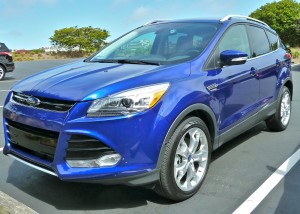
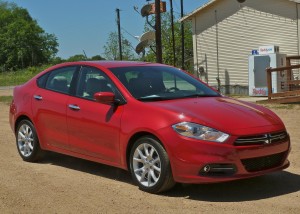
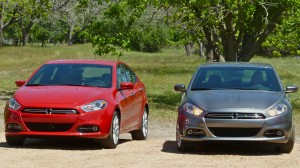
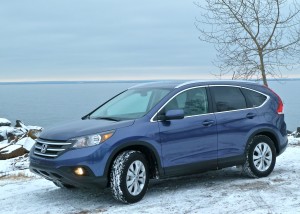
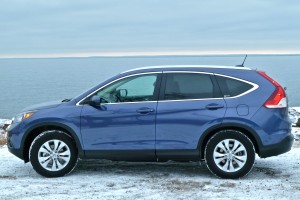
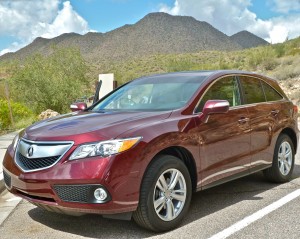
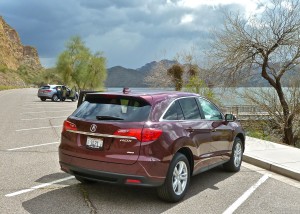
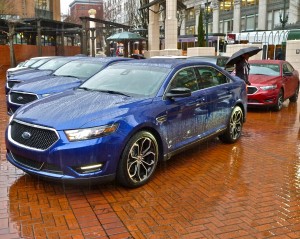
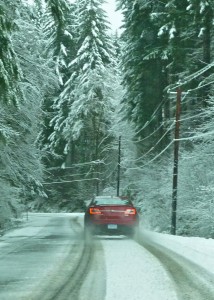
 John Gilbert is a lifetime Minnesotan and career journalist, specializing in cars and sports during and since spending 30 years at the Minneapolis Tribune, now the Star Tribune. More recently, he has continued translating the high-tech world of autos and sharing his passionate insights as a freelance writer/photographer/broadcaster. A member of the prestigious North American Car and Truck of the Year jury since 1993. John can be heard Monday-Friday from 9-11am on 610 KDAL(www.kdal610.com) on the "John Gilbert Show," and writes a column in the Duluth Reader.
John Gilbert is a lifetime Minnesotan and career journalist, specializing in cars and sports during and since spending 30 years at the Minneapolis Tribune, now the Star Tribune. More recently, he has continued translating the high-tech world of autos and sharing his passionate insights as a freelance writer/photographer/broadcaster. A member of the prestigious North American Car and Truck of the Year jury since 1993. John can be heard Monday-Friday from 9-11am on 610 KDAL(www.kdal610.com) on the "John Gilbert Show," and writes a column in the Duluth Reader.